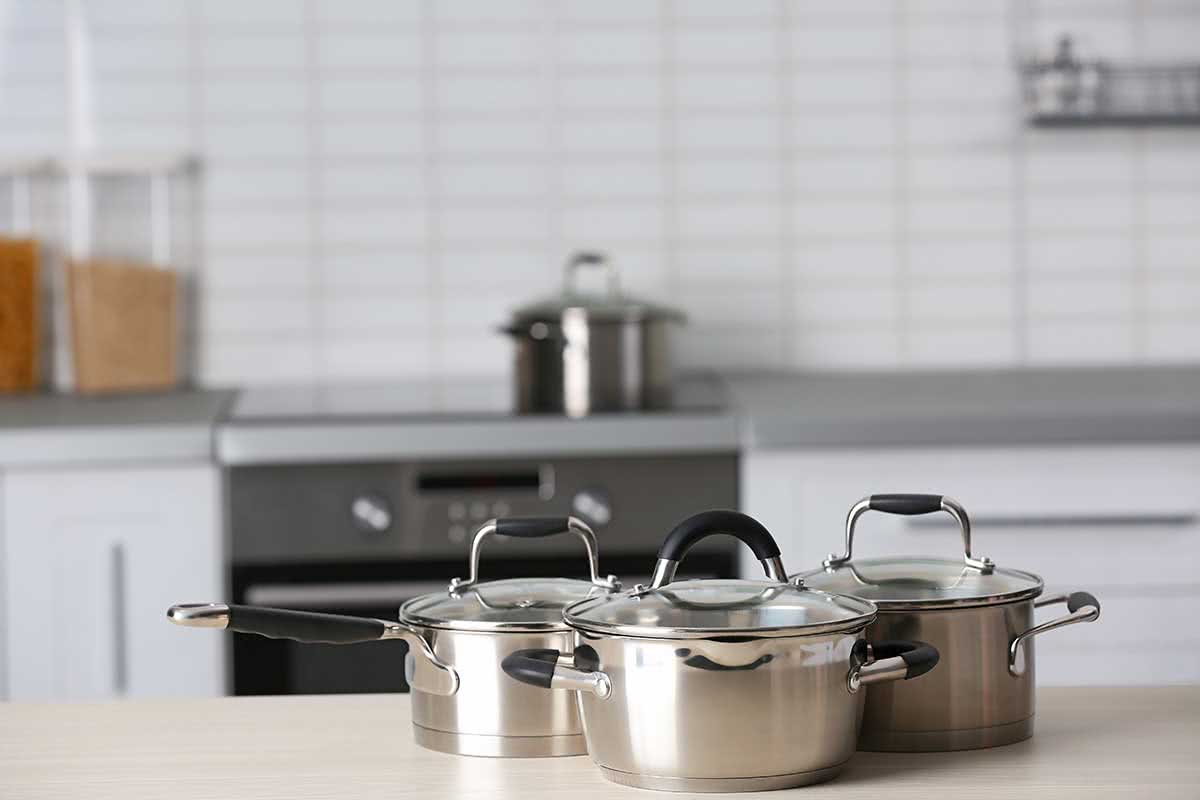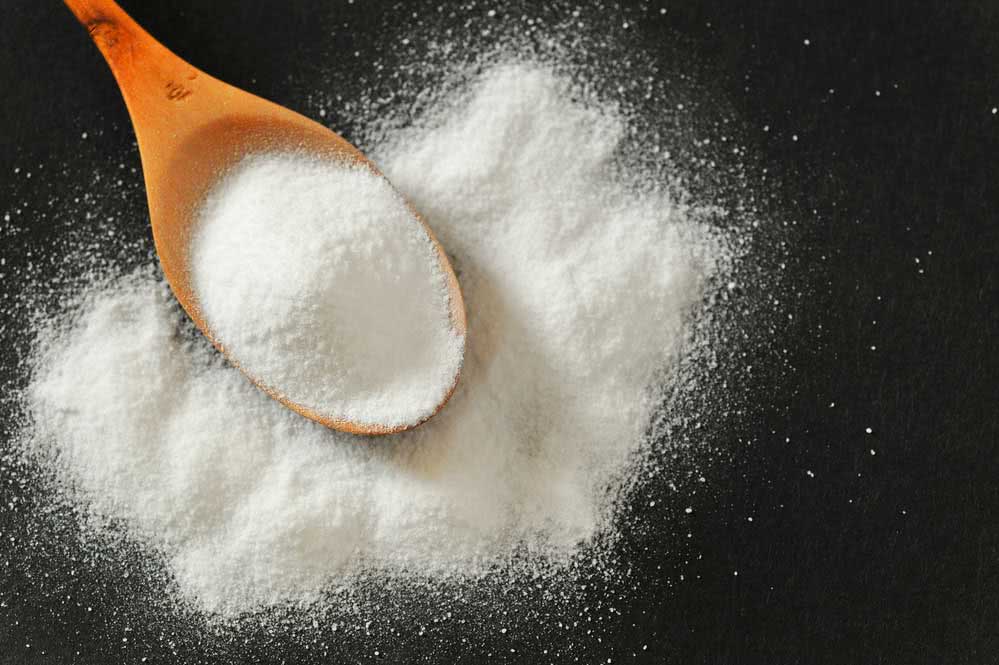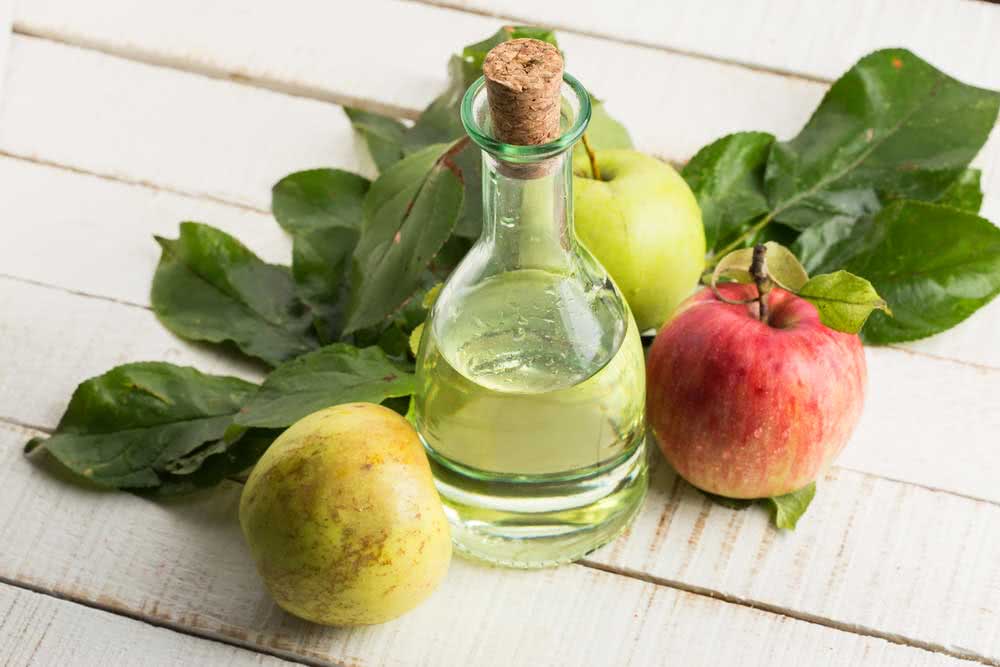Aluminum objects tend to darken over time, right? You have certainly noticed that pots, cutlery, trays, and so many other utensils become stained, looking old and dirty, even after being washed with water, detergent and sponge.
When you boil water in an aluminum kettle, over time, it gets dark, with a stained appearance, and this compromises the beauty of the object. If your kitchen utensils are kept for a long time and, without use, they can also end up darkening.
The same is true of windows, blinds and other structures made of aluminum. The windows and furniture in the house are areas that accumulate a lot of dirt in a short time. And the reason for so much exposure is the constant contact with the external environment.
This is because aluminum is a metal that reacts to atmospheric oxygen to form aluminum oxide, an opaque gray layer that completely destroys the beauty of the finish. In Brazil, which is a very humid and hot country, this is even more frequent.
But that is no reason to avoid objects made with this material. After all, aluminum, when well taken care of, is resistant, has excellent durability and is cost-effective. The great advantage of aluminum is that it is simple and quick to maintain. If you know how to clean aluminum, the cleaning routine will not require a lot of time or expensive ingredients.
With that in mind, we have prepared some practical tips on how to clean aluminum and keep it as new for longer. Come on!
How to clean aluminum: choosing the right products

The aluminum cleaning process is simple. However, it requires some care, because many products can leave stains that never come out. Avoid abrasive methods such as muriatic acid, caustic soda, chlorine, ether, petroleum products, acetones and products such as steel wool and rough sponges. They can scratch the aluminum and you will no longer be able to recover it.
A more serious problem, called corrosion, can occur on painted aluminum plates, especially on windows, boats or utensils that I constantly export to the sea. To prevent this from happening, you need to maintain a more frequent cleaning routine.
The good news is that natural and inexpensive products, like vinegar, baking soda and lemon, already do a good job. If you prefer something more specific, there are products of this type on the market, known as “clean aluminum”, or creamy sapolium. The important thing is that they do not contain heavy metals or solvents.
Another tip is to always dry the utensils very well after washing them. This way, you prevent the water present after cleaning from reacting again with the aluminum. After all, it is precisely moisture that is largely responsible for the oxidation of the parts.
Follow below the tips on how to clean aluminum with homemade recipes so that everything is shining and clear again!
How to clean stained aluminum

Remove dust and other debris with a soft bristle brush. Before removing rust marks, you will need to clean the surface of aluminum. Dark aluminum stains are usually the result of surface oxidation. Generally, warm water, a mild soap solution and a non-abrasive sponge is enough to eliminate them.
If it is not enough, try using other products, such as lemon and baking soda.
How to clean burnt aluminum
To remove scraps of burnt food from the back of the pans without damaging them, fill them with water and take them to the fire. Bring the water to a boil and wait another ten minutes. Then remove the pans from the heat and rub the remains of food softened by the water with a spatula. Repeat the procedure until the pan is clean.
Avoid using steel wool to remove food residues. The material may end up scratching the pan and making it even more difficult to clean in the future.
How to clean aluminum with lemon
Lemon can be great for lightening aluminum. In this case, you have two options:
- Leave the pan or utensils to soak for a few minutes in cold water with juice of half a lemon;
- Or leave a sliced lemon in the water and wait for 5 to 10 minutes.
Finish cleaning the object normally with water and detergent and the help of a sponge. Dry the utensil with a clean, dry cloth.
How to clean aluminum with baking soda

Baking soda is a big wildcard in house cleaning, you know? It is degreasing, bactericidal and also does an excellent job of deoxidizing metal objects. But be careful: in the case of anodized aluminum, baking soda is prohibited!
To remove stains from aluminum oxidation, just add two tablespoons full of baking soda to the detergent. So, just finish cleaning with the sponge.
If food stains are stuck to the piece, you can soak the pan with a tablespoon of baking soda, detergent and water for a few minutes until the stains come off.
Another option is to use the dry baking soda powder in a sponge or a clean, damp cloth to avoid scratches.
How to Clean Aluminum with Vinegar

Vinegar is also a great ally in cleaning and very easy to handle. Check out!
- To prepare the mixture, use about two dessert spoons of vinegar for a quarter of water. Boil the solution in the pan and let the mixture cook for 15 minutes after boiling.
- Smaller utensils can also be placed inside the pan to receive cleaning at the same time. Repeat the procedure as many times as necessary.
- Wash the pan under warm running water to remove any vinegar residue and dry it with a dish towel.
How to clean anodized aluminum
Anodizing, or electrostatic painting, are treatments that protect aluminum and give the object a beautiful and modern appearance. Despite being a little more resistant to oxidation, it is necessary to take some care to keep the material always shining and looking new. Heads up! In this case, cleaning with baking soda is not a good idea.
To clean anodized aluminum from external structures, such as doors and windows, you can use a hose to remove surface dirt. Then, just rub with neutral detergent diluted with water.
Always use a sponge or soft cloth, as rough sponges and steel wool can scratch the metal. When finished, try to dry the surface well with a clean cloth.
How to clean aluminum window and door
The aluminum windows, doors and gates that are outside the house, in contact with the street, usually accumulate a lot of dust. So, the easiest and most efficient method is to use a hose. Check out:
- Using a hose, remove all dirt from the surface, taking advantage of the water flow;
- In a bucket, put two liters of warm water and 1/4 cup of washing powder or liquid;
- Use a soft sponge to rub the solution on the aluminum;
- Some corners of blinds can accumulate more dirt. If you prefer, use an old toothbrush to reach the most difficult areas;
- Always clean doors and windows from top to bottom, to prevent dirt from dripping into the area that is already clean;
- Finish with another jet of hose and remove all the soap;
- Dry with a soft cloth.
To clean the doors and windows inside the house, especially if you live in an apartment, you do not need to use a water hose. In that case, provide a creamy sapolus, a soft cloth, an old toothbrush, a bucket of water and a handful of work:
- Put warm water in the bucket;
- Moisten the cloth in water and remove all surface dirt from the window or door;
- Apply a small amount of creamy scallop to another damp cloth and clean the surface;
- Rub as many times as needed;
- Dissolve sapolium in water, moisten the toothbrush and whip it in the corners;
- Finally, moisten another cloth with cold water and wipe the entire surface.
- Remove any excess cleaning product.
How to polish aluminum

After learning how to clean aluminum, it is interesting to know some extra tricks to polish the surface and make the piece more shiny. Like many metals, aluminum can also lose its luster when not used or when it gets dirty and damp.
Using only steel wool moistened with water you can get a good result. However, this process can take more time and be very tiring. In addition, it is not all material that will gain the desired effect, as some pieces may scratch. A wire brush softer than steel can work well.
For immediate results, bet on a soft cloth and a product from the market to polish aluminum. Furniture polish also works. Just apply a small amount of the product to the cloth and rub the surface. In addition to giving shine, it creates a protective film and prevents the rapid accumulation of dust and dirt.
Did you like our tips on how to clean aluminum and make everything shine?
If you also know some easy and efficient cleaning tricks like the ones we saw here, share with us in the comments. To the next!



